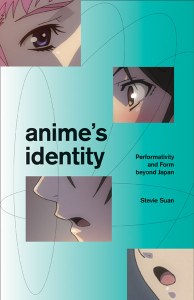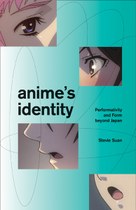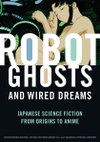Anime's Identity
Performativity and Form beyond Japan
Stevie Suan

WINNER OF THE JAPANESE SOCIETY FOR ANIMATION STUDIES AWARD
In Anime’s Identity, Stevie Suan examines how anime’s recognizable media-form—no matter where it is produced—reflects the problematics of globalization. Anime’s Identity deftly merges theories from media studies and performance studies, introducing innovative formal concepts that connect anime to questions of dislocation on a global scale, creating a transformative new lens for analyzing popular media.
Stevie Suan utterly transforms our understanding of anime. Using media theory to expand the formal analysis of anime conventions, while calling on a transnational framework to avoid a simplistic opposition between local and global, he not only provides incisive readings of key anime series, but also lays out a powerful and much-needed methodology for thinking anime in the world.
Thomas Lamarre, author of The Anime Ecology: A Genealogy of Television, Animation, and Game Media

Anime has become synonymous with Japanese culture, but its global reach raises a perplexing question—what happens when anime is produced outside of Japan? Who actually makes anime, and how can this help us rethink notions of cultural production? In Anime’s Identity, Stevie Suan examines how anime’s recognizable media-form—no matter where it is produced—reflects the problematics of globalization. The result is an incisive look at not only anime but also the tensions of transnationality.
Far from valorizing the individualistic “originality” so often touted in national creative industries, anime reveals an alternate type of creativity based in repetition and variation. In exploring this alternative creativity and its accompanying aesthetics, Suan examines anime from fresh angles, including considerations of how anime operates like a brand of media, the intricacies of anime production occurring across national borders, inquiries into the selfhood involved in anime’s character acting, and analyses of various anime works that present differing modes of transnationality.
Anime’s Identity deftly merges theories from media studies and performance studies, introducing innovative formal concepts that connect anime to questions of dislocation on a global scale, creating a transformative new lens for analyzing popular media.
Awards
Japanese Society for Animation Studies Award — Winner
$30.00 paper ISBN 978-1-5179-1178-2
$120.00 cloth ISBN 978-1-5179-1177-5
384 pages, 60 b&w photos, 5 1/2 x 8 1/2, October 2021

Stevie Suan is associate professor at Hosei University’s Faculty of Global and Interdisciplinary Studies.

Stevie Suan utterly transforms our understanding of anime. Using media theory to expand the formal analysis of anime conventions, while calling on a transnational framework to avoid a simplistic opposition between local and global, he not only provides incisive readings of key anime series, but also lays out a powerful and much-needed methodology for thinking anime in the world.
Thomas Lamarre, author of The Anime Ecology: A Genealogy of Television, Animation, and Game Media
Focusing on formalism and performance studies in particular, rather than taking a phenomenological or sociological approach, Stevie Suan proposes a radical alternative for engaging with anime studies.
Daisuke Miyao, author of Japonisme and the Birth of Cinema
Anime's Identity provides a multilayered overview of cultural debates on anime for an English-reading audience.
The Journal of Asian Studies

Contents
Introduction: Anime’s Performance of Identity
1. Anime’s Local–Global Tensions
2. Anime’s Dispersed Production
3. Anime’s Media Heterotopia
4. Anime’s Citationality
5. Anime’s Creativity
6. Anime’s Actors
7. Anime’s (Anti)Individualism
8. Anime’s Dislocation
Conclusion: Anime’s World
Acknowledgments
Notes
Index






